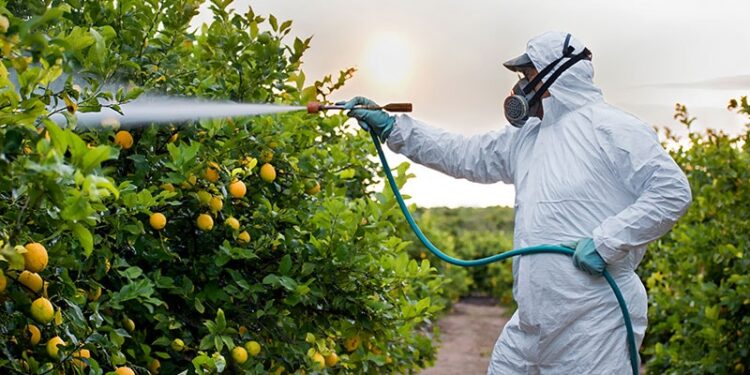TOPLINE:
Among female spouses of licensed pesticide applicators, the personal use of organochlorine insecticides was associated with an increased risk for rheumatoid arthritis (RA). Among women who did not use specific pesticides personally, the applicator’s use of specific pesticides was associated with incident RA.
METHODOLOGY:
- Researchers investigated whether the use of pesticides influenced the risk for RA in a cohort of female spouses of licensed pesticide applicators from North Carolina and Iowa (1993-1997).
- They included 32,126 female spouses and collected data on their direct pesticide use or indirect exposure, regular farming tasks, and other demographic and lifestyle factors.
- Cases of incident RA were identified using follow-up questionnaires, medical records, medication use, and claims data.
- The analysis included 410 participants with probable RA (median age, 51 years) and 21,850 without RA (median age, 45 years), with a median survey follow-up duration of 10 and 19 years and a median of 0.5 and 8 fee-for-service years among those with Medicare data, respectively.
- A total of 32 specific pesticides were included in the final analysis, and their associations with RA were estimated.
TAKEAWAY:
- Almost half of the participants never used agricultural pesticides. Most reported using them for 20 days or less each year (adjusted odds ratio [aOR], 1.26; 95% CI, 1.01-1.57 vs never use) and for 20 years or less, with no higher odds being observed among those who used them more.
- The personal use of organochlorine insecticides was associated with a higher likelihood for incident RA (aOR, 1.54; 95% CI, 1.14-2.07), especially with the use of dichlorodiphenyltrichloroethane (aOR, 1.89; 95% CI, 1.30-2.75) and lindane (aOR, 1.97; 95% CI, 1.12-3.47); among the organophosphate insecticides, coumaphos use showed a stronger association (aOR, 2.32; 95% CI, 1.29-4.19).
- Among spouses who never used specific pesticides themselves, the applicator’s use of metribuzin was associated with increased odds of RA (aOR, 1.66; 95% CI, 1.10-2.52).
- The use of any fungicide was associated with increased odds of RA (aOR, 1.72; 95% CI, 1.24-2.38). Several farming activities, such as cleaning with solvents, driving a gas tractor, grinding feed, painting, applying chemical fertilizer, and planting, were significantly associated with RA.
IN PRACTICE:
“[The study] findings provide robust evidence that some insecticides may contribute to risk of developing RA in women. While insecticides are an important tool in controlling threats to crops and human health, our results provide evidence of potential risks,” the authors wrote.
SOURCE:
This study was led by Christine G. Parks, PhD, Epidemiology Branch, National Institute of Environmental Health Sciences, Research Triangle Park, North Carolina. It was published online on July 16, 2025, in Arthritis & Rheumatology.
LIMITATIONS:
Some cases of RA may have been missed by the algorithm, and clinical data and details such as serology of RA were missing. The study had insufficient statistical power to examine differences by risk factors linked to seropositive and seronegative RA. The exposure to pesticides was self-reported, and the frequency or duration of pesticide use in spouses was lacking.
DISCLOSURES:
This study received support in part from the intramural research program of the National Institutes of Health, the National Institute of Environmental Health Sciences, and the National Cancer Institute. The authors reported having no conflicts of interest.
This article was created using several editorial tools, including AI, as part of the process. Human editors reviewed this content before publication.
Source link : https://www.medscape.com/viewarticle/wives-farm-pesticide-applicators-risk-incident-ra-2025a1000k6e?src=rss
Author :
Publish date : 2025-07-30 09:55:00
Copyright for syndicated content belongs to the linked Source.











